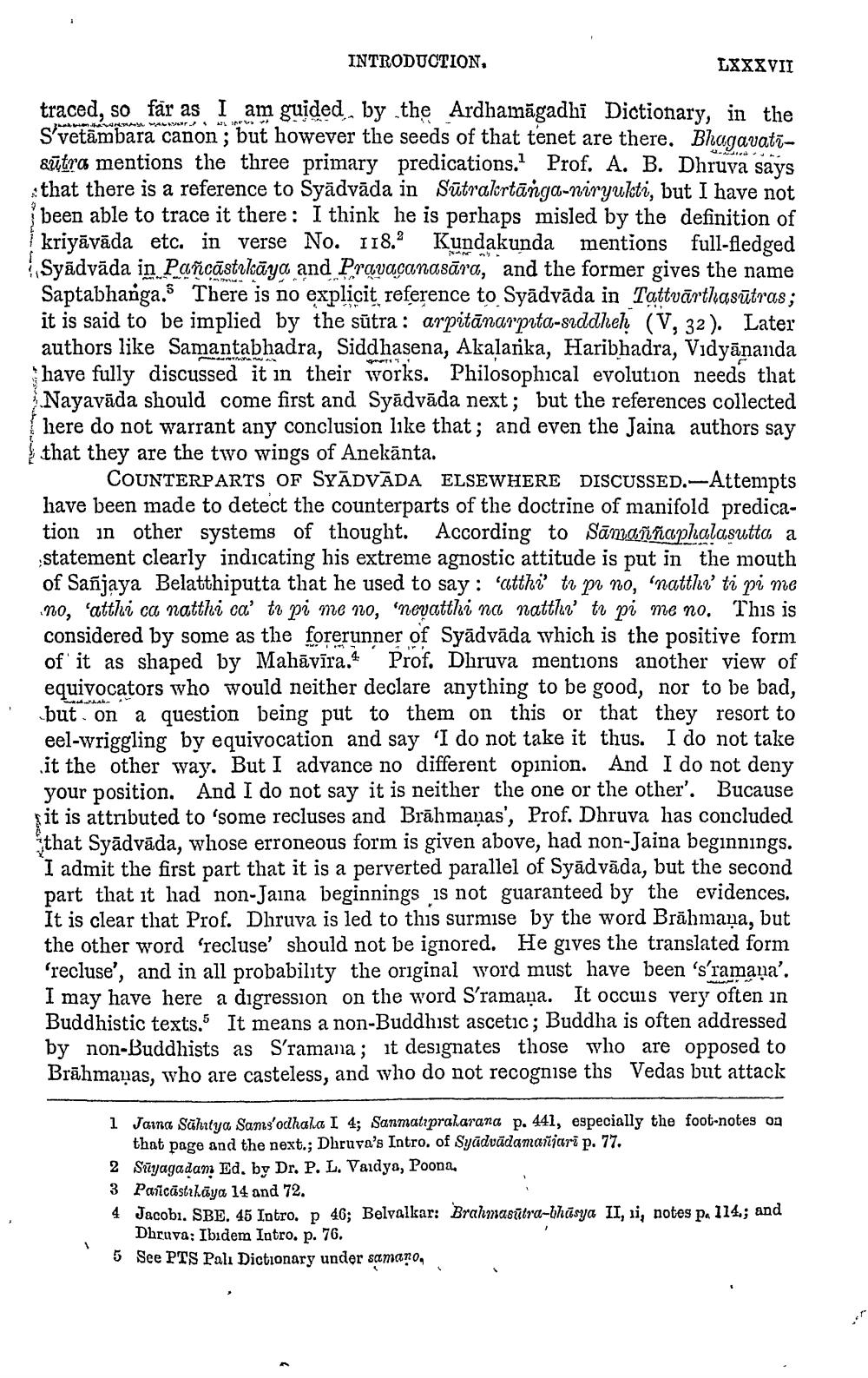________________
INTRODUCTION.
UNMAYA MA
traced, so far as I am guided by the Ardhamagadhi Dictionary, in the Svetambara canon; but however the seeds of that tenet are there. Bhagavatisutra mentions the three primary predications. Prof. A. B. Dhruva says that there is a reference to Syädvāda in Sutrakrtānga-niryukti, but I have not been able to trace it there: I think he is perhaps misled by the definition of kriyāvāda etc. in verse No. 118.2 Kundakunda mentions full-fledged Syādvāda in Pañcāstikāya and Pravacanasara, and the former gives the name Saptabhanga. There is no explicit reference to Syadvāda in Tattvarthasūtras; it is said to be implied by the sutra: arpitānarpita-siddheḥ (V, 32). Later authors like Samantabhadra, Siddhasena, Akalanka, Haribhadra, Vidyananda have fully discussed it in their works. Philosophical evolution needs that Nayavada should come first and Syadvāda next; but the references collected here do not warrant any conclusion like that; and even the Jaina authors say that they are the two wings of Anekanta.
LXXXVII
COUNTERPARTS OF SYADVADA ELSEWHERE DISCUSSED.-Attempts have been made to detect the counterparts of the doctrine of manifold predication in other systems of thought. According to Samaññaphalasutta a statement clearly indicating his extreme agnostic attitude is put in the mouth of Sanjaya Belatthiputta that he used to say: 'atthi ti pa no, 'natth' ti pi me no, 'atthi ca natthi ca' ti pi me no, 'neyatthi na natth' to pi me no. This is considered by some as the forerunner of Syadvada which is the positive form of it as shaped by Mahāvīra. Prof. Dhruva mentions another view of equivocators who would neither declare anything to be good, nor to be bad, but on a question being put to them on this or that they resort to eel-wriggling by equivocation and say 'I do not take it thus. I do not take it the other way. But I advance no different opinion. And I do not deny your position. And I do not say it is neither the one or the other'. Bucause it is attributed to 'some recluses and Brahmanas', Prof. Dhruva has concluded that Syadvada, whose erroneous form is given above, had non-Jaina beginnings. I admit the first part that it is a perverted parallel of Syadvada, but the second part that it had non-Jaina beginnings is not guaranteed by the evidences. It is clear that Prof. Dhruva is led to this surmise by the word Brahmaṇa, but the other word 'recluse' should not be ignored. He gives the translated form 'recluse', and in all probability the original word must have been 's'ramana'. I may have here a digression on the word S'ramana. It occurs very often in Buddhistic texts. It means a non-Buddhist ascetic; Buddha is often addressed by non-Buddhists as S'ramana; it designates those who are opposed to Brāhmaṇas, who are casteless, and who do not recognise ths Vedas but attack
1 Jamna Sahitya Sams'odhala I 4; Sanmatiprakarana p. 441, especially the foot-notes on that page and the next.; Dhruva's Intro. of Syadvädamañjarī p. 77.
2 Suyagadam Ed. by Dr. P. L. Vaidya, Poona,
3 Pañcastıkaya 14 and 72.
4 Jacobi. SBE. 45 Intro. p 46; Belvalkar: Brahmasutra-bhūsya II, 1i, notes p. 114.; and Dhruva: Ibidem Intro. p. 76.
1 5 See PTS Pali Dictionary under samano,
.."




